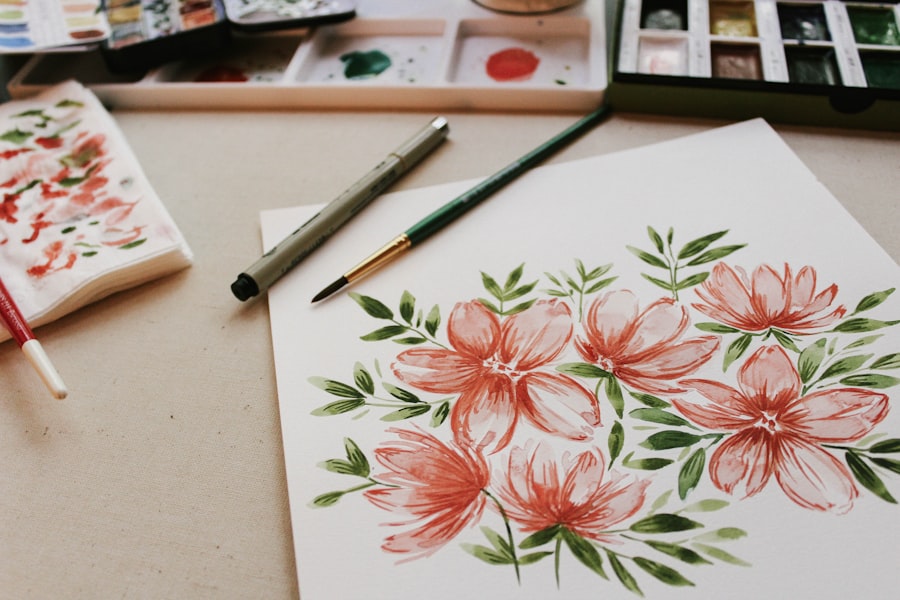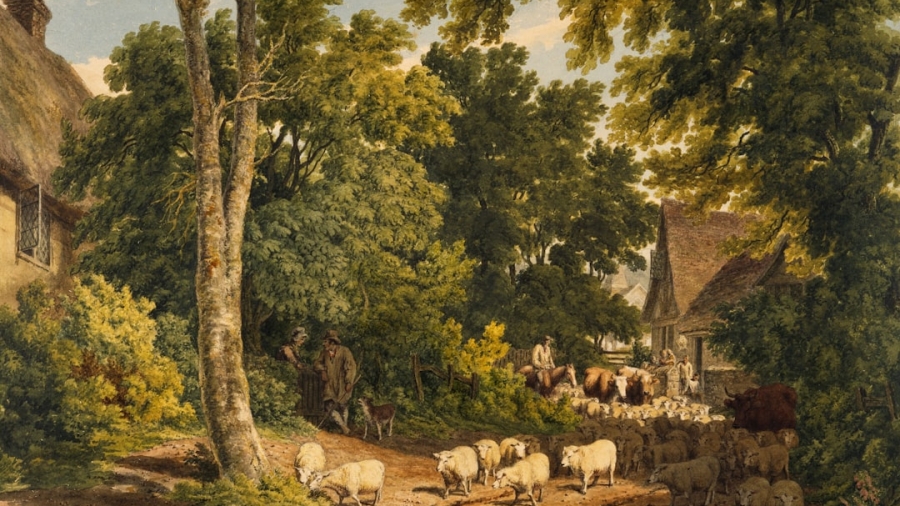Artificial Intelligence (AI) has emerged as a transformative force across various sectors, fundamentally altering how we approach creativity. Traditionally, creativity has been viewed as an inherently human trait, characterized by the ability to generate novel ideas, express emotions, and connect disparate concepts in innovative ways. However, the advent of AI technologies has prompted a reevaluation of this notion, as machines increasingly demonstrate capabilities that mimic human creative processes.
From generating visual art to composing music and even crafting narratives, AI systems are not merely tools but collaborators that challenge our understanding of what it means to be creative. This intersection of technology and artistry raises profound questions about the nature of creativity itself and the role of human agency in a world where machines can produce works that resonate with audiences. As we delve deeper into the relationship between AI and creativity, it becomes evident that this synergy is not merely a passing trend but a significant evolution in the creative landscape.
The integration of AI into creative practices has opened up new avenues for exploration, allowing artists, musicians, writers, and designers to push the boundaries of their respective fields. By leveraging algorithms and machine learning, creators can analyze vast datasets, uncover patterns, and generate ideas that may not have been conceived through traditional methods. This collaboration between human intuition and machine efficiency not only enhances the creative process but also democratizes access to artistic expression, enabling individuals from diverse backgrounds to engage with and contribute to the creative economy.
As we navigate this uncharted territory, it is essential to consider both the opportunities and challenges that arise from the fusion of AI and creativity.
Key Takeaways
- AI is revolutionizing the creative industry by enabling new forms of artistic expression and innovation.
- AI is being used in art and design to generate new visual styles, create digital art, and assist in the design process.
- In music and film, AI is being used to compose music, generate sound effects, and even create entire films.
- AI is also being used in writing and literature to generate content, assist in editing, and even write entire books.
- In marketing and advertising, AI is being used to personalize content, optimize campaigns, and create targeted advertisements.
AI in Art and Design
The realm of art and design has witnessed a remarkable transformation with the introduction of AI technologies. Artists are now utilizing machine learning algorithms to create stunning visual pieces that challenge conventional aesthetics. For instance, generative adversarial networks (GANs) have gained popularity for their ability to produce unique artworks by learning from existing styles and techniques.
These algorithms can analyze thousands of images, identifying patterns and nuances that inform their creations. The result is a new genre of art that blurs the lines between human creativity and machine-generated output. Artists like Refik Anadol and Mario Klingemann have embraced these tools, producing immersive installations that captivate audiences while raising questions about authorship and originality in the digital age.
Moreover, AI is revolutionizing design processes across various industries, from fashion to architecture. Designers are increasingly turning to AI-driven software to streamline their workflows, enabling them to focus on conceptualization rather than repetitive tasks. For example, tools like Adobe Sensei leverage AI to enhance image editing capabilities, automate mundane tasks, and provide intelligent suggestions based on user preferences.
This not only accelerates the design process but also fosters innovation by allowing designers to experiment with new ideas without the constraints of traditional methods. As AI continues to evolve, it is likely that we will see even more sophisticated applications in art and design, prompting a reevaluation of the role of the artist in an era where machines can create alongside them.
AI in Music and Film

The influence of AI extends beyond visual arts into the realms of music and film, where it is reshaping how creators compose, produce, and distribute their work. In music, AI algorithms can analyze vast libraries of songs to identify trends, styles, and even emotional undertones. This capability allows musicians to experiment with new sounds and genres while also providing insights into audience preferences.
Companies like Amper Music and AIVA have developed platforms that enable users to generate original compositions by simply inputting parameters such as mood or genre. This democratization of music creation empowers aspiring artists who may lack formal training but possess a passion for sound. In the film industry, AI is making waves in various aspects of production, from scriptwriting to post-production editing.
Screenwriters are beginning to collaborate with AI tools that can analyze successful scripts and suggest plot developments or character arcs based on established tropes. Additionally, AI-driven editing software can streamline the post-production process by automating tasks such as color correction and sound mixing. This not only saves time but also allows filmmakers to focus on storytelling rather than technical details.
As AI continues to advance, it is likely that we will see even more innovative applications in music and film, raising questions about the future of artistic expression in an increasingly automated world.
AI in Writing and Literature
The literary world is also experiencing a significant shift due to the integration of AI technologies. Writers are exploring how machine learning can assist in generating ideas, crafting narratives, and even producing entire novels. Tools like OpenAI’s GPT-3 have demonstrated remarkable capabilities in generating coherent text based on prompts provided by users.
This has led to discussions about the potential for AI-generated literature to coexist with traditional writing forms. While some may view this as a threat to human authorship, others see it as an opportunity for collaboration—where writers can use AI as a brainstorming partner or a source of inspiration. Furthermore, AI’s impact on writing extends beyond content creation; it also influences how literature is consumed and analyzed.
Natural language processing (NLP) technologies enable readers to engage with texts in new ways, such as through personalized recommendations based on reading habits or sentiment analysis that uncovers underlying themes within a narrative. Publishers are increasingly utilizing AI algorithms to predict market trends and identify potential bestsellers, allowing them to make data-driven decisions about which manuscripts to invest in. As these technologies continue to evolve, they will undoubtedly reshape the landscape of writing and literature, prompting us to reconsider the boundaries between human creativity and machine-generated content.
AI in Marketing and Advertising
In the fast-paced world of marketing and advertising, AI has become an indispensable tool for brands seeking to connect with consumers in meaningful ways. By harnessing data analytics and machine learning algorithms, marketers can gain insights into consumer behavior, preferences, and trends that inform their strategies. This data-driven approach allows for highly targeted campaigns that resonate with specific audiences, ultimately enhancing engagement and conversion rates.
For instance, companies like Google and Facebook utilize AI algorithms to optimize ad placements based on user interactions, ensuring that advertisements reach the right people at the right time. Moreover, AI is revolutionizing content creation within marketing by automating processes such as copywriting and graphic design. Tools like Copy.ai leverage natural language processing to generate compelling marketing copy tailored to specific audiences or products.
Similarly, design platforms powered by AI can create visually appealing graphics based on user input or brand guidelines. This not only streamlines the creative process but also enables brands to maintain consistency across various channels while adapting their messaging to suit different demographics. As AI continues to evolve within marketing and advertising, it will undoubtedly lead to more innovative approaches that challenge traditional norms while enhancing brand storytelling.
Ethical Considerations of AI in Creativity

As we embrace the potential of AI in creative fields, it is crucial to address the ethical considerations that accompany this technological advancement. One significant concern revolves around authorship and ownership of AI-generated works. When a machine produces a piece of art or literature, questions arise regarding who holds the rights to that creation—the programmer who developed the algorithm, the user who inputted parameters, or perhaps even the machine itself?
This ambiguity complicates traditional notions of intellectual property and raises important legal questions that need to be addressed as AI continues to permeate creative industries. Additionally, there are concerns about bias in AI-generated content. Algorithms are trained on existing datasets that may reflect societal biases or stereotypes, leading to outputs that perpetuate these issues.
For instance, if an AI system is trained predominantly on works from a specific demographic or cultural background, its creations may lack diversity or fail to represent marginalized voices accurately. This highlights the importance of ensuring that diverse perspectives are included in training datasets and that creators remain vigilant about the potential implications of relying too heavily on machine-generated content. As we navigate this complex landscape, fostering ethical practices in the development and application of AI technologies will be essential for preserving the integrity of creative expression.
The Future of AI and Human Creativity
Looking ahead, the future of AI and human creativity appears both promising and complex. As technology continues to advance at an unprecedented pace, we can expect further integration of AI into creative processes across various domains. This evolution will likely lead to new forms of artistic expression that blend human intuition with machine efficiency, resulting in innovative works that challenge our understanding of creativity itself.
The collaboration between humans and machines may foster a renaissance in creativity—one where artists leverage AI as a tool for exploration rather than viewing it as a competitor. However, this future also necessitates ongoing dialogue about the implications of such collaborations. As we embrace the potential benefits of AI in creativity, we must remain mindful of its limitations and ethical considerations.
The challenge lies in finding a balance between harnessing technological advancements while preserving the essence of human creativity—our ability to connect emotionally with others through art and storytelling. By fostering an environment where humans and machines coexist harmoniously in creative endeavors, we can pave the way for a future rich with artistic innovation while honoring the unique qualities that define our humanity.
If you’re interested in exploring how AI can enhance human creativity, you might also find value in reading about how emerging technologies are shaping various industries. A related article that delves into this topic is available on ENIComp’s website, which focuses on the impact of new tech trends. You can read more about how these technologies are being integrated into daily business practices and creative processes by visiting this article on emerging technologies. This piece could provide additional insights into how AI tools and other innovations are being used to boost efficiency and creativity across different sectors.
FAQs
What is AI?
AI, or artificial intelligence, refers to the simulation of human intelligence in machines that are programmed to think and act like humans. This includes tasks such as learning, problem-solving, and decision-making.
How does AI enhance human creativity?
AI can enhance human creativity by providing tools and platforms that assist in generating new ideas, designs, and solutions. It can analyze large amounts of data, identify patterns, and suggest innovative approaches, thus augmenting the creative process.
What are some examples of AI enhancing human creativity?
Examples of AI enhancing human creativity include AI-powered design tools that assist in creating artwork, music, or writing, as well as AI algorithms that help in generating new ideas and concepts in various fields such as marketing, product development, and architecture.
Can AI replace human creativity?
While AI can assist and augment human creativity, it is not capable of replacing the unique and complex nature of human creativity. AI lacks the emotional and intuitive aspects of human creativity, and ultimately, human creativity is essential for driving innovation and originality.
What are the potential benefits of AI in enhancing human creativity?
The potential benefits of AI in enhancing human creativity include increased efficiency in idea generation, access to new tools and resources for creative expression, and the ability to analyze and process large amounts of data to inspire new creative insights and solutions.

